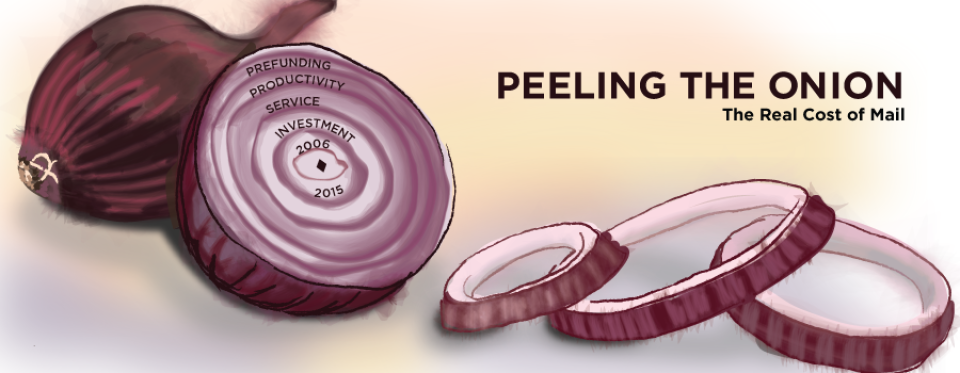Peeling the Onion: The Real Cost of Mail
April 18, 2016 (RARC-WP-16-009)
- Since passage of the Postal Accountability and Enhancement Act (PAEA) in 2006, the OIG finds the Postal Service is doing better controlling its costs than sometimes is reported in the news.
- The Postal Service has redesigned its network of processing plants, retail locations, delivery routes, and transportation systems, as well as modernized some of its workforce labor practices.
- Some financial improvements resulted from pure cost-cutting, which may have affected service quality.
When Congress passed the PAEA in 2006, it established a new set of regulatory incentives designed to increase the U.S. Postal Service’s efficiency. As the PAEA’s 10th anniversary approaches, we revisit postal cost trends to evaluate how well the Postal Service has been managing its costs.
The number and cost of workhours are down, even with the increase in delivery points. The less expensive noncareer employees have increased by 3 percent each year on average since 2006. Prefunding of future retiree health benefits can cause labor cost to appear as a disproportionally high percentage of the Postal Service’s total cost. The Postal Service has actually decreased its labor expenditures by about $10 billion since FY 2006, when adjusting for inflation and removing prefunding.
Future Postal Service success hinges upon providing excellent service and making needed capital expenditures to modernize its existing network’s capabilities to support 21st century postal demands. The Postal Service must continually seek to improve customer service and make appropriate capital investments to fully integrate its network with the digital world. USPS stakeholders and management need to develop ways and means for generating adequate revenue so that the Postal Service can build for the future.

